Barklice 2021
Following last year's Ectopsocus meridionalis and more
Martha O'Kennon
Last summer we followed a community of Ectopsocus meridionalis. At the end of the season 2020, they had established many sites with clusters of eggs. Here is their colony on panel 8 of the North Wall. Picture 3 shows that the site is pretty much unchanged when I began checking it on March 11, 2021.
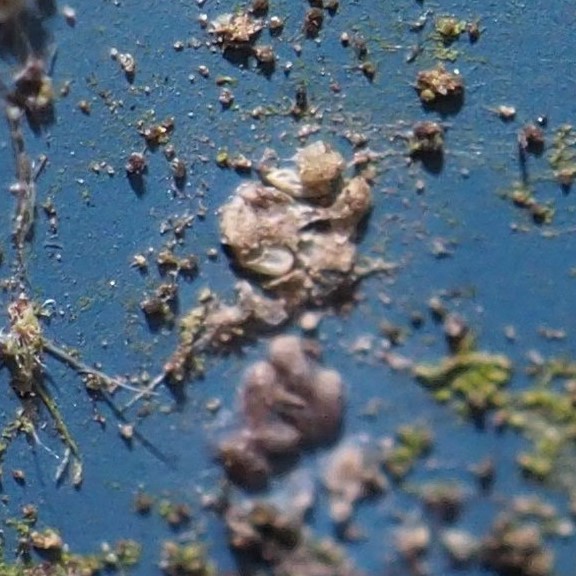
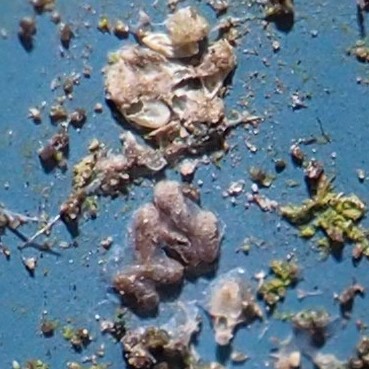

Unfortunately that night we had a huge rain. On the North Side of the shop, the trees are bare and offer no help for the sites with eggs. Picture 1 was taken on March 12. Pictures 2 and 3 show some of the wreckage on panel 5 on March 17 and 23.
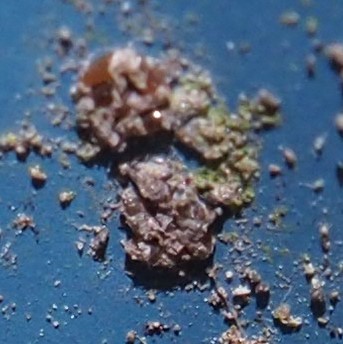

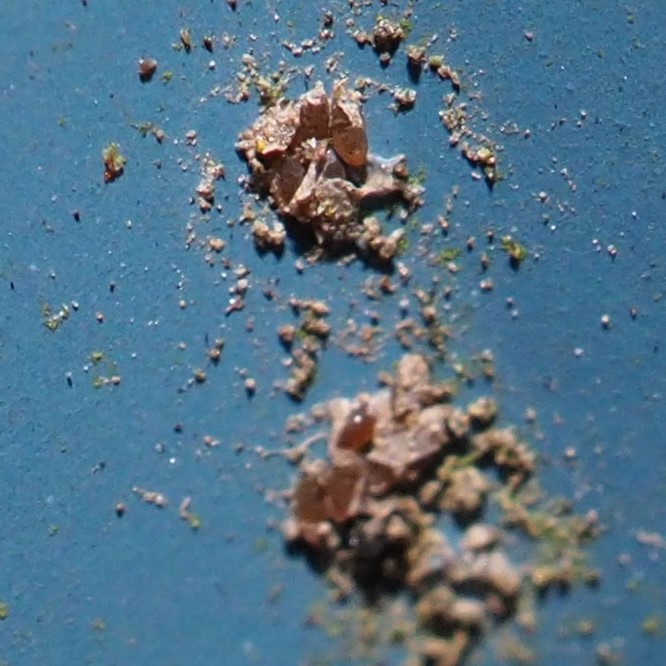
On March 26 and 27, I did manage to find a few purplish-red "things" on the lowel part of some of the panels. I'm sorry I didn't write down the names of the panels. They bear little resemblance to the originals that we watched as they developed last summer/fall. Pictures 1 and 2 are from March 26. Picture 3 is on the bottom of panel 8.

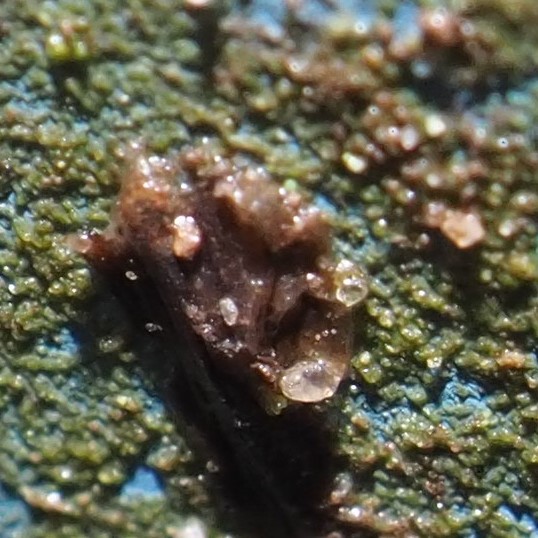

This morning, March 30, I finally found the place where the "Trefoil" of purplish-red E. meridionalis eggs used to be, and to my relief and surprise found what looks like a few eggs left. Picture 1 shows what the Trefoil looked like on March 21. Picture 2 shows the first sight. Picture 3 shows it taken closer, still on March 30, almost straight up (but not quite). This means that there is still a chance that a couple of the eggs from Fall 2020 are still alive!


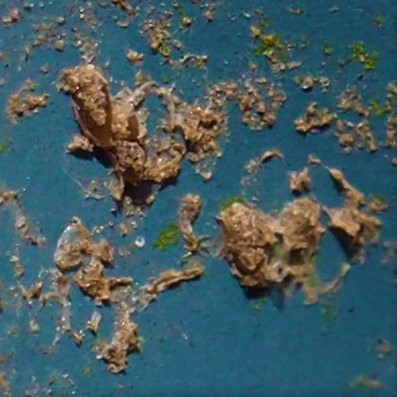
But a few days later and I hardly saw any sign that Ectopsocus had left any eggs or that any had hatched. Still on north panel 10 there was this seeming remnant of the "trefoil" we had seen before.. This picture was taken on April 21, 2021. And I haven't seen any encouraging signs of the Barklice, especially the E. meridionalis, that we had followed since August.
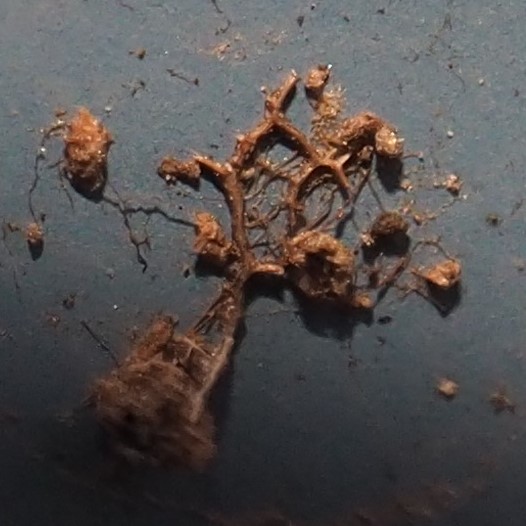
So let's see if we can find some other species to follow. In December 2020 into January 2021, we had good numbers of Graphopsocus cruciatus. Picture 2 shows a bunch of eggs that were here on north panel 11 in December and are still unhatched in April. At some time between these two photos, it seemed that one egg tried to hatch.
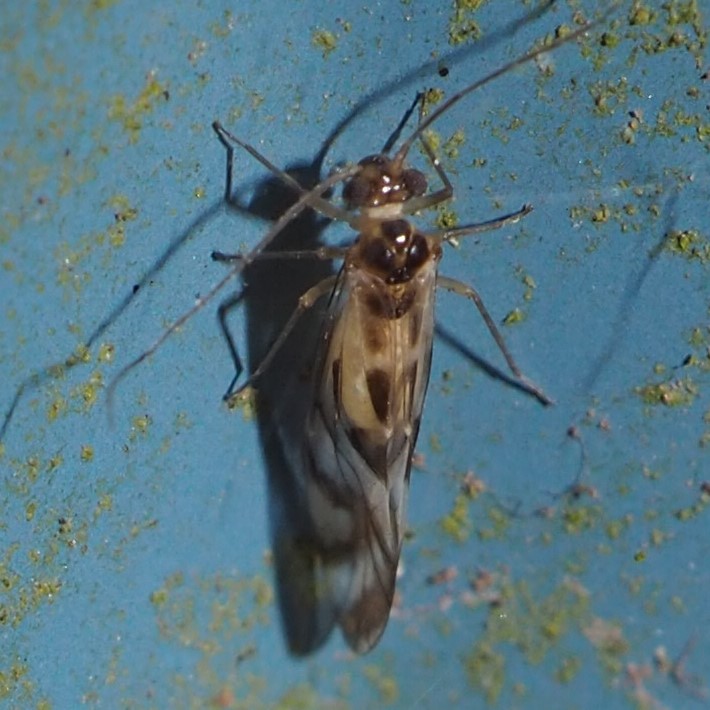
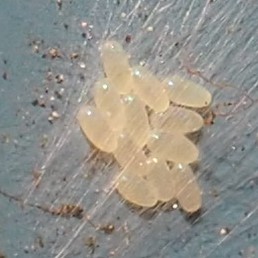

Other species were also sighted during the winter, especially in December. This first one (from December2, 2020) might be in genus Valenzuela. So might the second, taken on January 15, 2021. We had earlier seen V. flavidus, and some that we suspect were V. pinicola. Third is Metylophorus novaescotiae, seen on November 9, 2020.
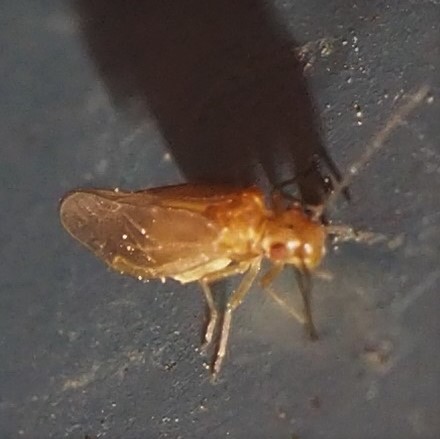
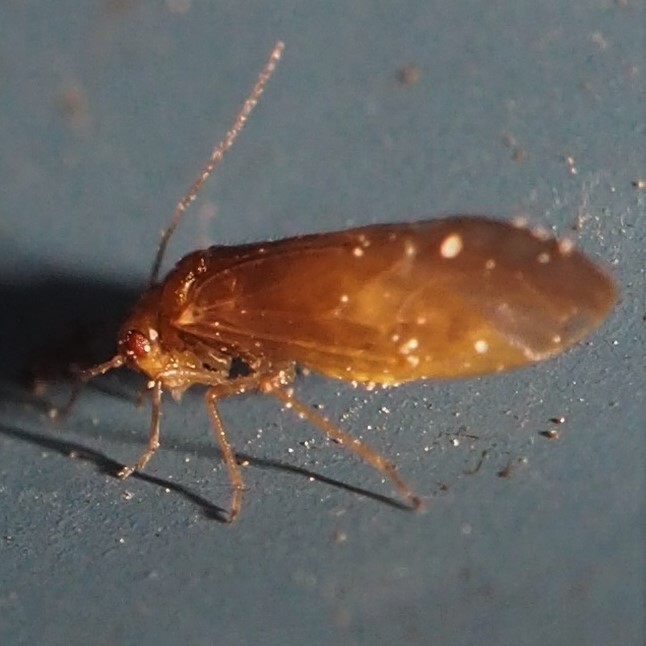
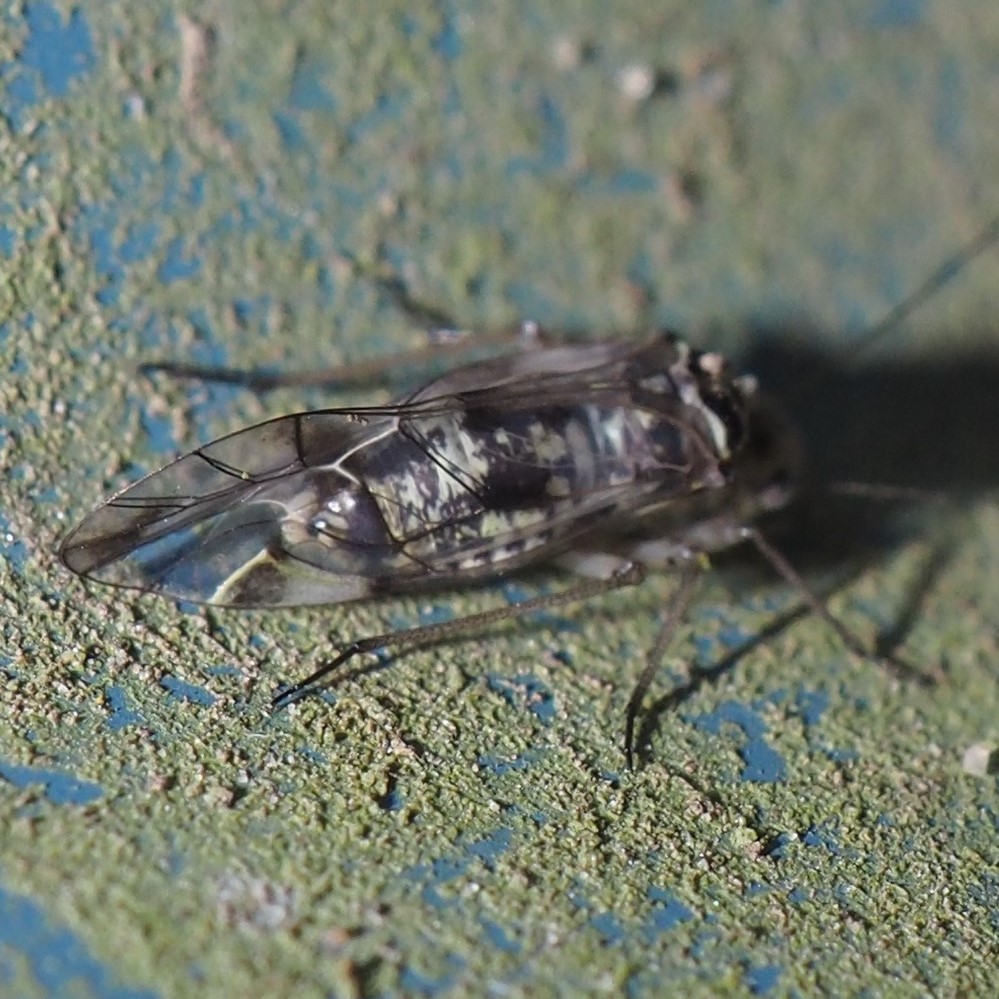
On March 12, I started seeing little yellow nymphs that seemed to be hatching from eggs on east panel 8 from south and others on or about east panel 4 from north. These two pictures seem to be from the same site. The nymphs seemed to disappear within a couple of days, but picture 3 shows a pair of little nymphs (or maybe the smaller one is a skin left from the moulting of the first) on east 2 from north who seemed to have hatched from a couple of the 4 eggs pictured.
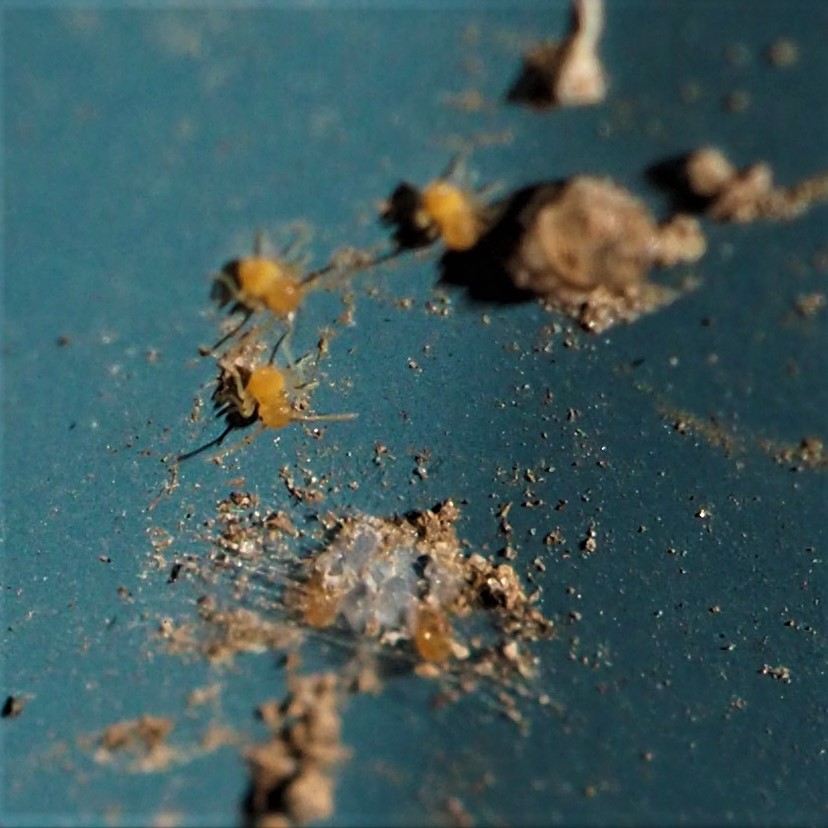
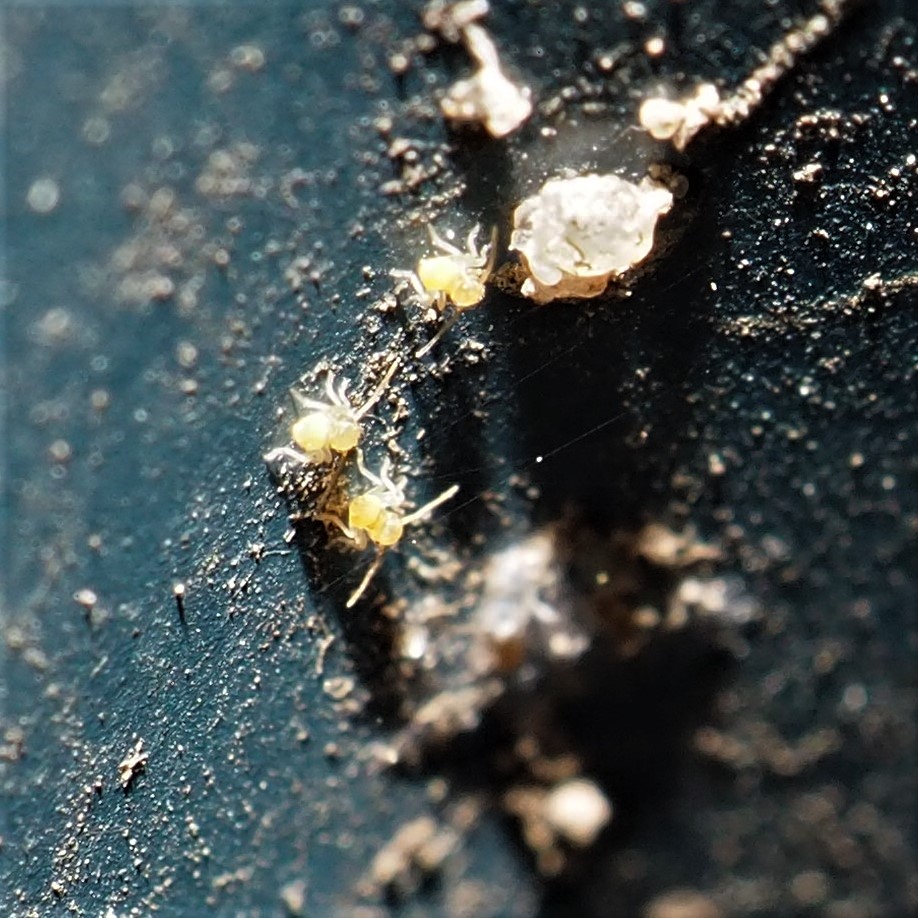
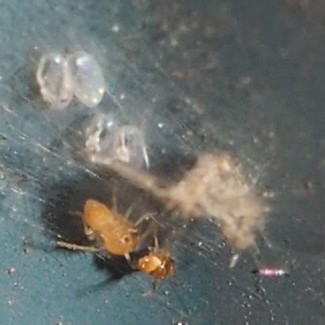
On April 19, a colleague posted a picture that looked like a Barklouse on iNat. So I went out to my walls and looked all around. On both east panels 5 and 3 from north, there were some small nymphs. Were they the ones from March 12 but with over a month of fat put on? They seem too small, but who knows? So here we have east panel 5 from north, with two little nymphs. And on east panel 3 from north, another. The second seems to be developing the thoracic "dots" that are typical of Graphopsocus cruciatus. Of course there were in total 5 babies on panel 5 and several others from panel 3. Third here are some eggs on the east-north corner. I'm not sure what the proposed species of these eggs are, not seeing the usual webbing that G. cruciatus adds to its eggs.) The next couple of days were wet and cold, but the little nymphs on east 5 and east 3 from north made it.
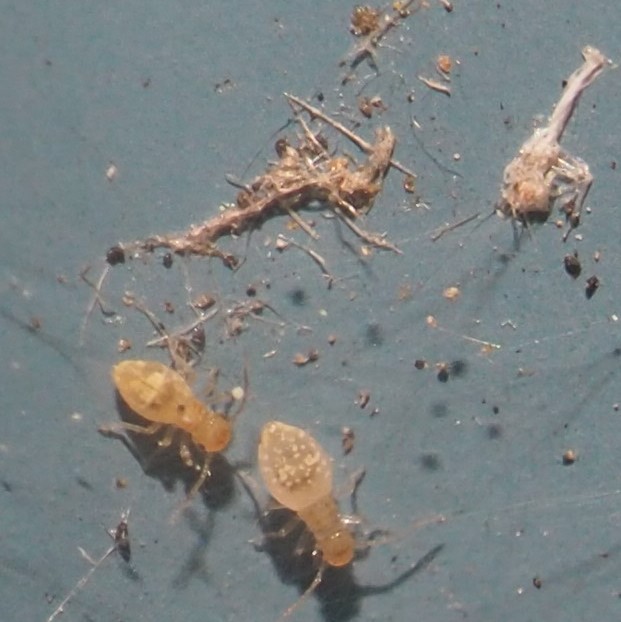
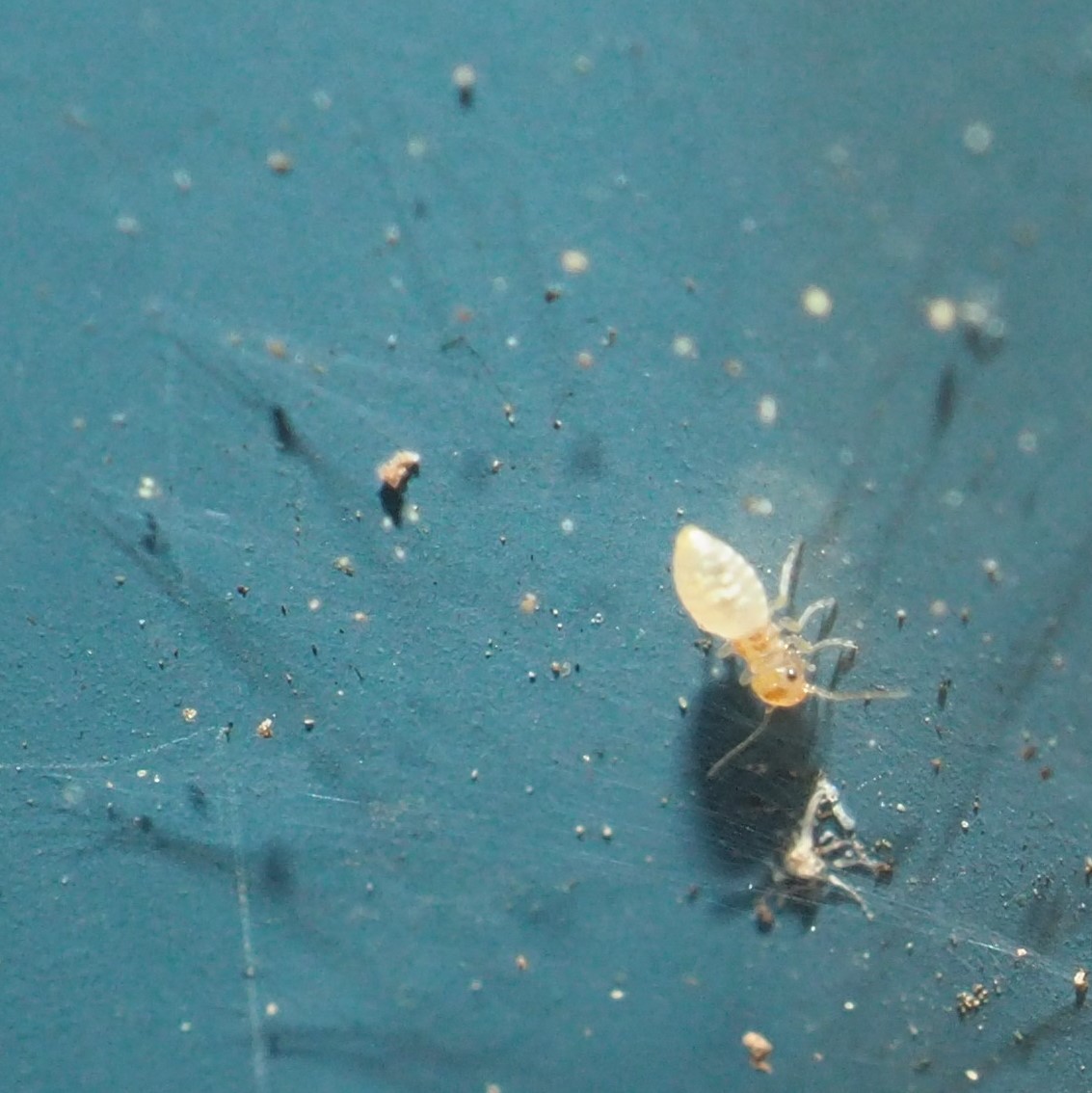

Several weeks ago, this batch of what seem to be eggs were found a couple of feet up the East wall. They are covered in a brownish coating, unlike either the G. cruciatus, whose eggs weren't covered in anything but a webbing, or the Ectopsocus meridionalis from the fall. They haven't changed in that time. The second picture, taken on April 17, 2021, seems to show yet another kind of eggs on east panel 9 from north and resembles a picture (picture 3), taken on May 13, 2020 (but where?). Picture 4 shows eggs in another type of webbing, less distinct than that of G. cruciatus. They were seen on the south wall near the east corner.
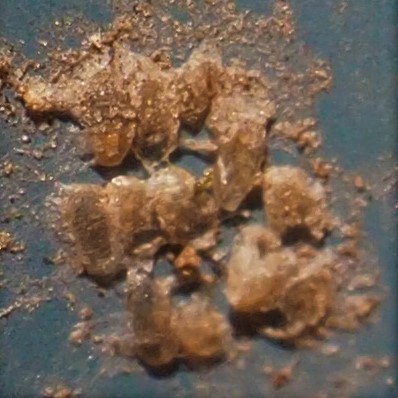
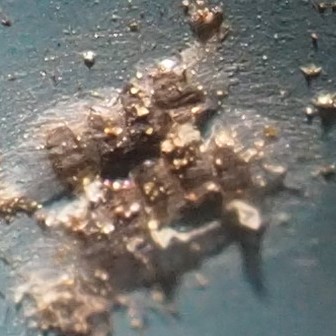
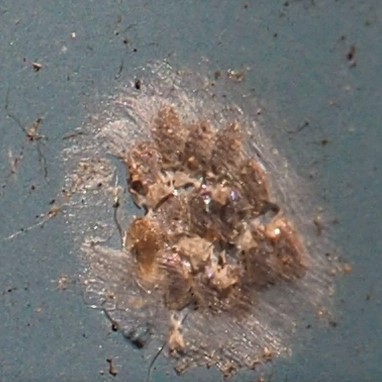
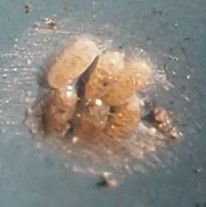
The little nymphs that showed up on April 19 are now 10 days older on April 29. One of them has moved onto the east panel 8 from north, and actually shows its developing wings (easiest to see on the left). Its thoracic red spots are very distinct so I think it's safe to call it G. cruciatus. Second and third show the patch of overwintered eggs on the east wall 4 from north, a month apart (April 17 and then April 27) and not showing any substantive changes. And then we see the little clutch of eggs from April 29 on the south-east corner, not changed externally from the ones right above them in the last paragraph (April 19).
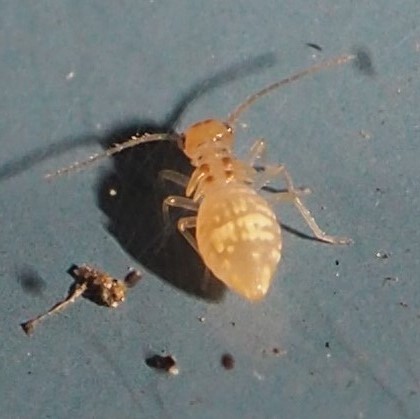

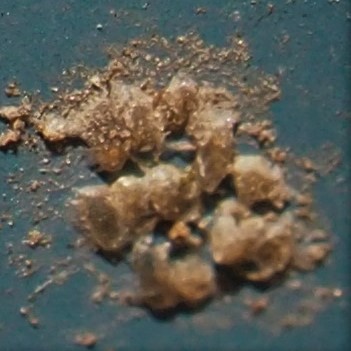
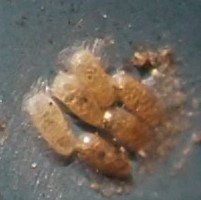
May Day! On May 1, the first adult G. cruciatus showed up for me at 11:22 am. The next pictures were taken at 12:29. You can see the spent skin in some.

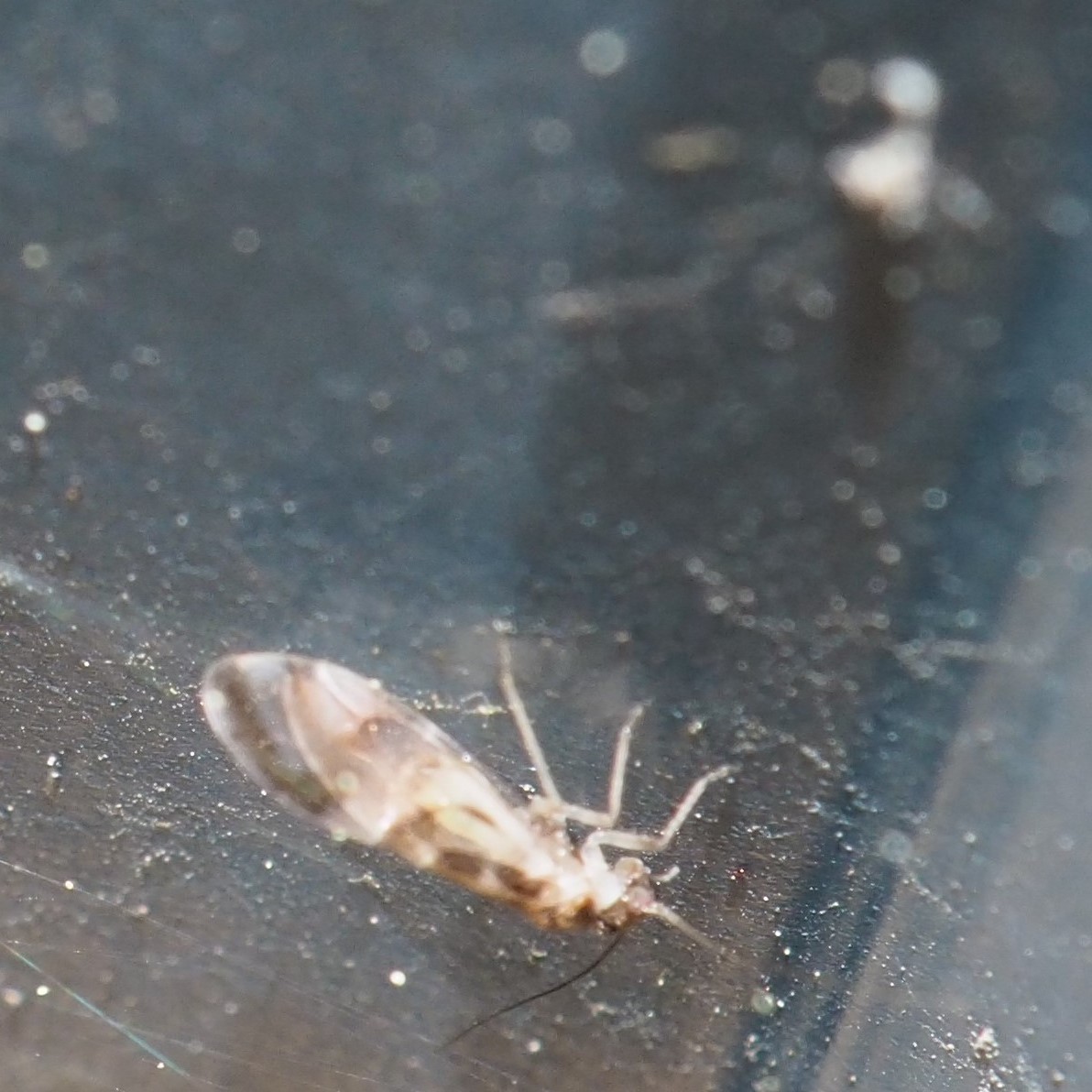
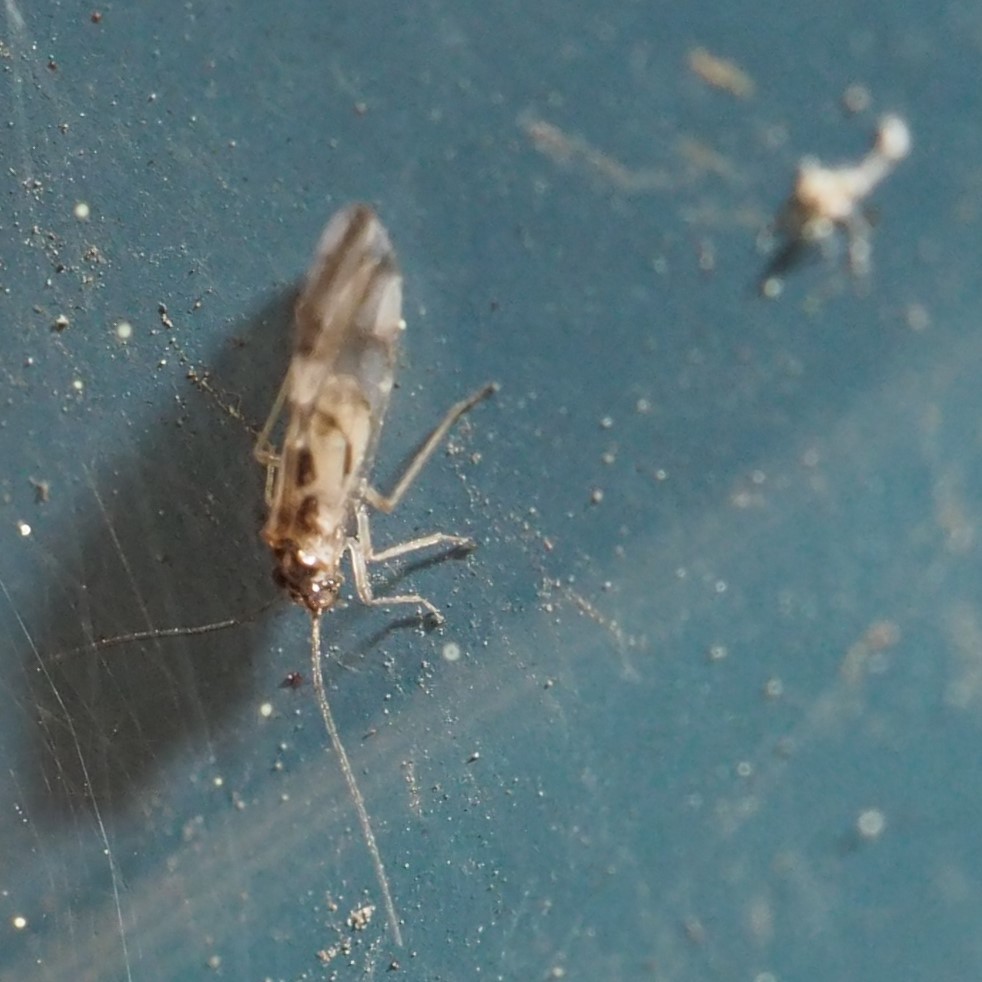
The next day another adult or the same as the last was seen 6 panels to the east of the first one.
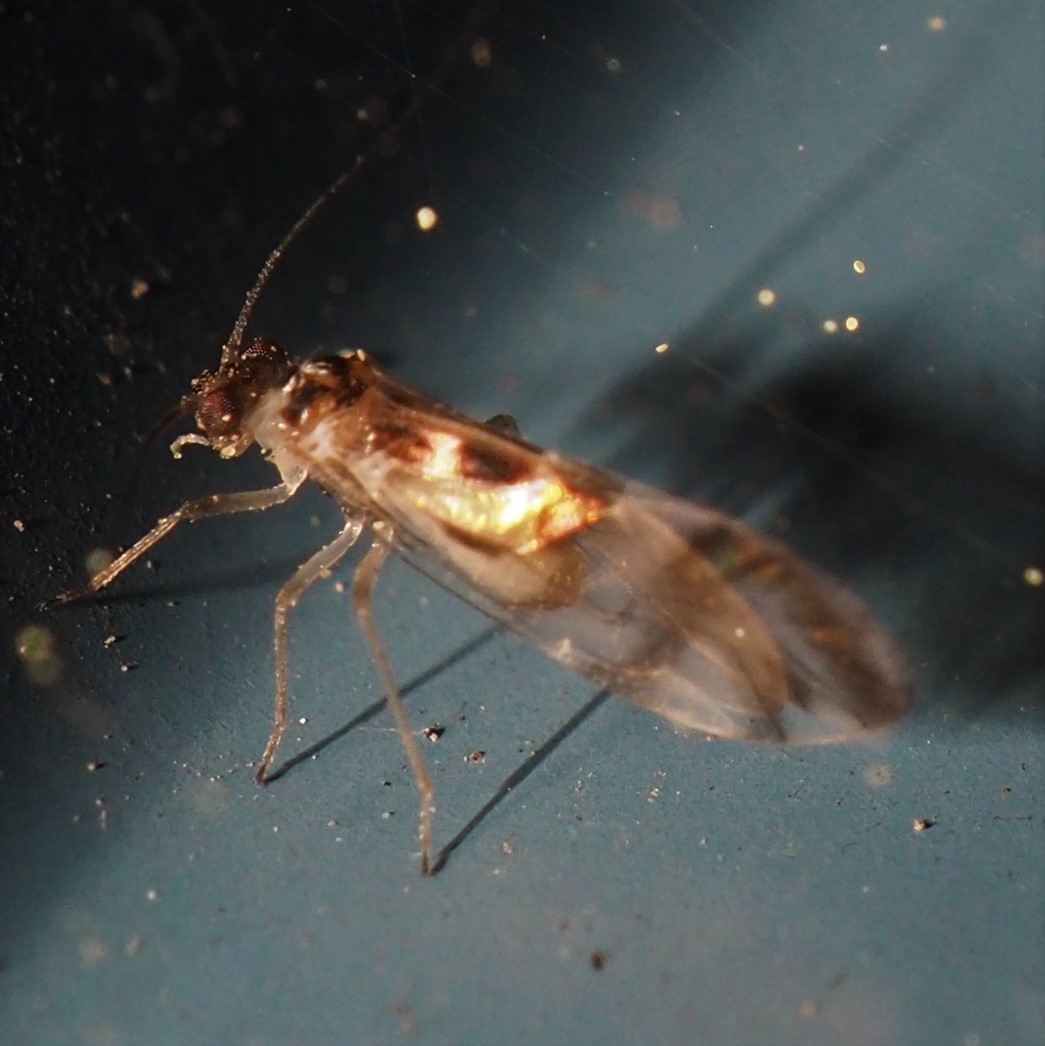
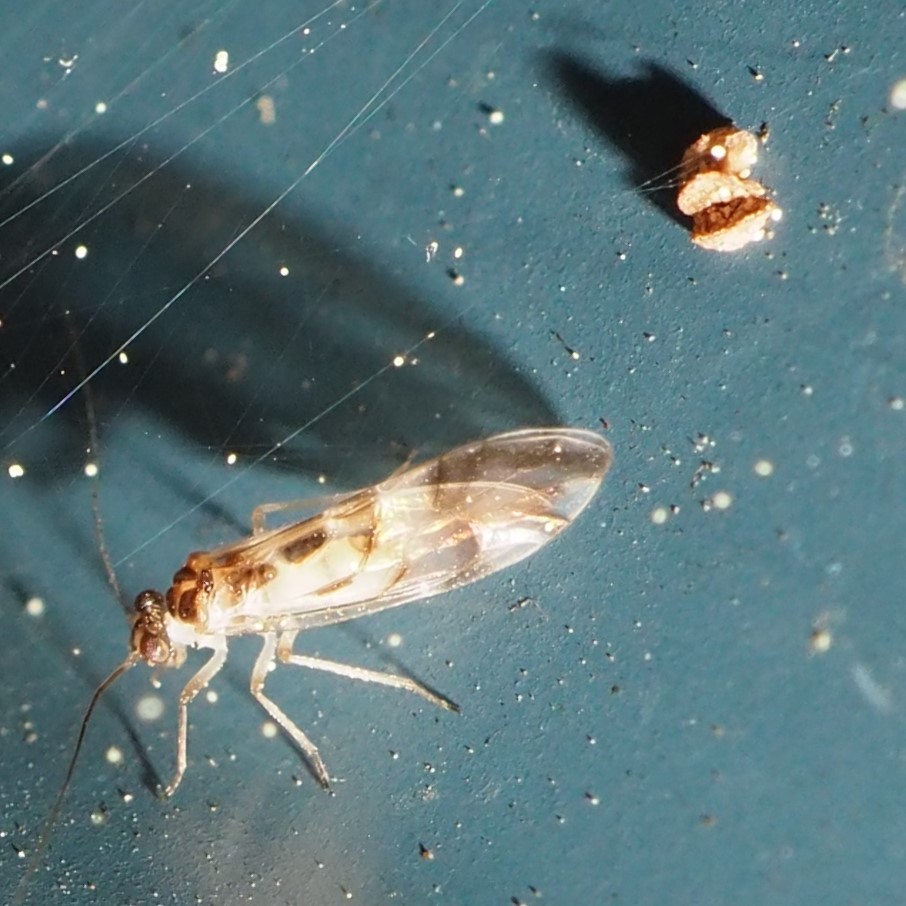

But most exciting and most encouraging sight since Fall - on May 4, 2021, this tiny Ectopsocus Barklouse appeared on the South Wall (opposite of the North Wall, whereas every Ectopsocus of last year was seen) on Panel 4 from the East corner, at just about eye level, about 11:45 this morning. I didn't finish cropping the pictures from morning until just after 4:00 pm. Actually when I cropped this first picture about 4, I sent myself packing back outdoors to see if she (it) was still there. The only difference I saw was that the later Barklouse, which in the morning seemed upside down and maybe laying eggs, was now head up and now I couldn't tell that the newbie itself hadn't just hatched from the little patch of white, which is now up at its head. I will have to check with Diane Young to be sure that this Ectopsocid is actually the same species (meridionalis) as our friends from last fall.
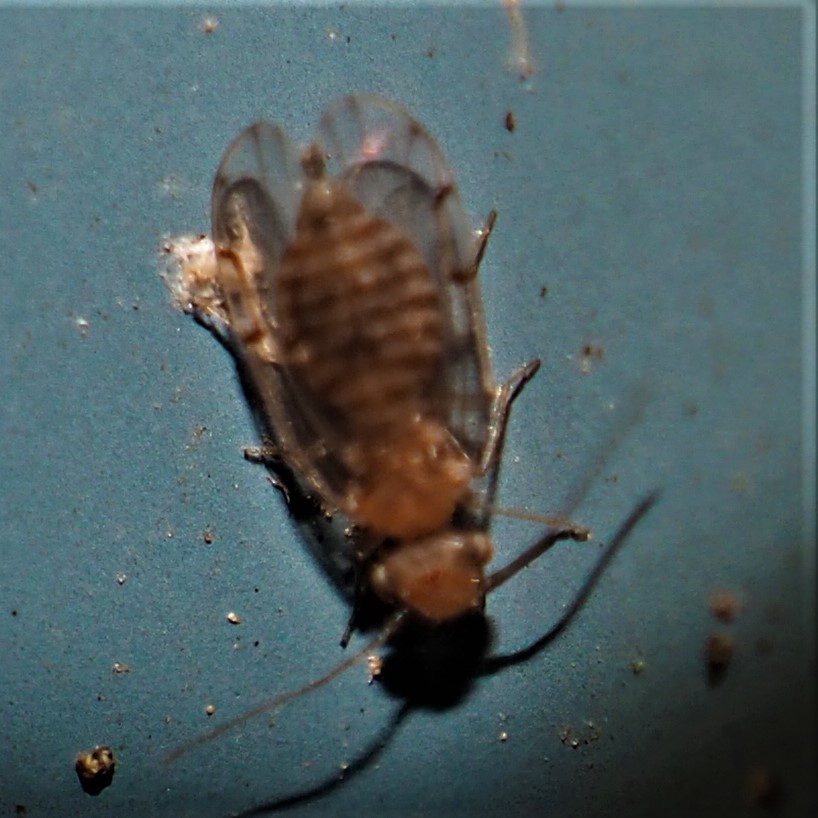

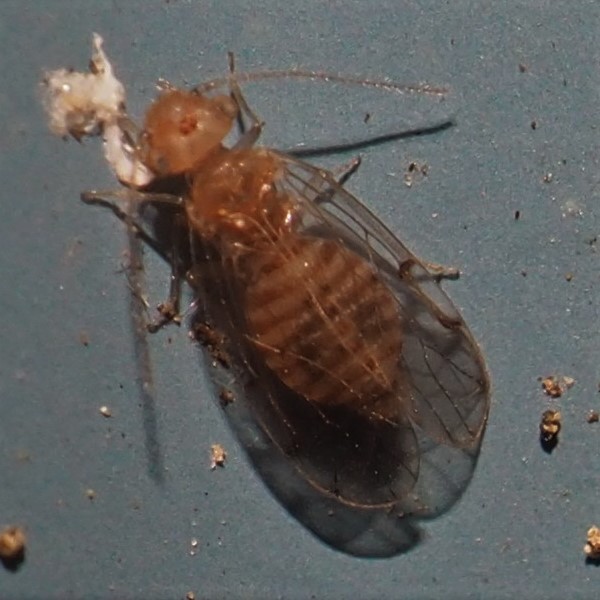
A day later, ANOTHER Ectopsocus adult showed up on South 9 from East, while the first still sat on South 4 from East. Another day, neither adult appeared, not the one on South 9 from east nor the original one on South 4 from 9. However, in the South 4 from east where the original adult had been, on this day (May 6, 2021), a new clutch of eggs appeared. Do those new eggs look like Ectopsocus eggs? Here (third) is a picture from September 6, 2020, showing that they do indeed look like last year's eggs!
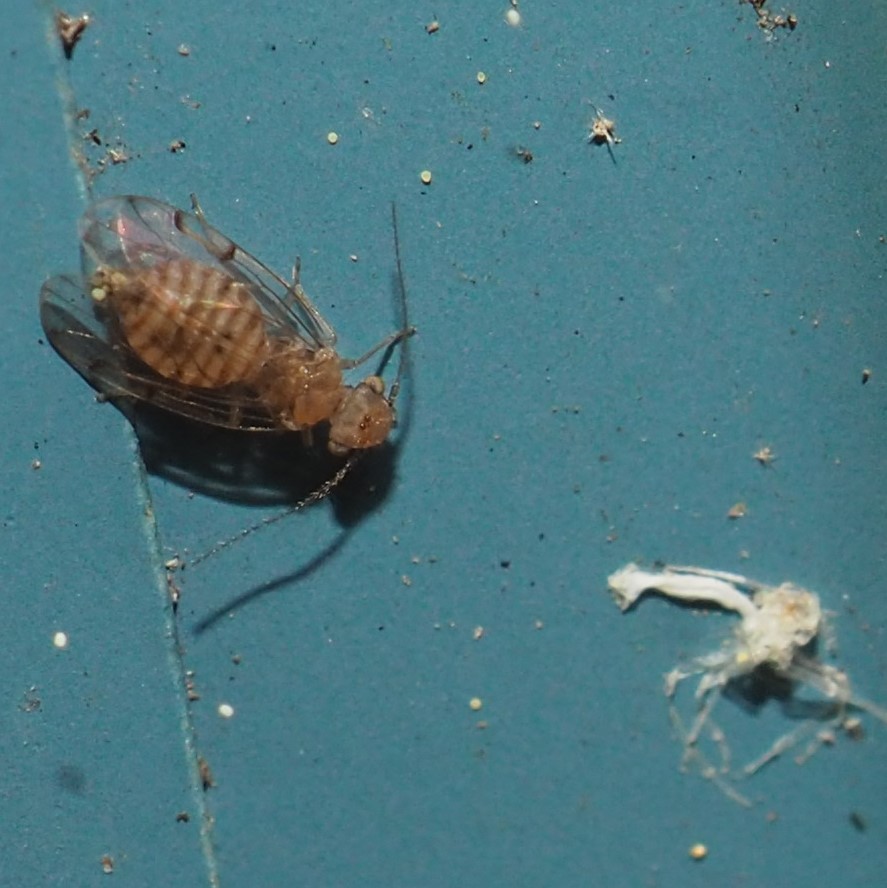


I have been noticing that a number of my Barklouse pictures seem to show a lot of plain whitish-yellow circles - don't know what they are but today I noticed that a certain pile of "junk" on South 4 from east also contain an awful lot of these little disks. Could they be an early form of nymph? Picture 2 shows a scene from the north wall, panel 8. Remember that there were a lot of Ectopsocus eggs laid on panel 8 last fall. I think we have got to chase these little things for a while. Do Ectopsocus lay more than one kind of egg? Hold this thought! (of course, the little last nymph is probably Graphopsocus cruciatus, with no relation to Ectopsocus.)
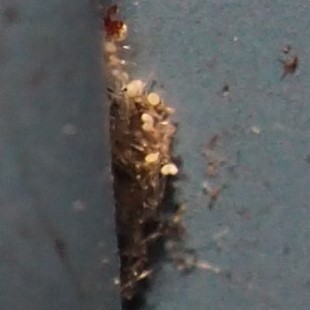
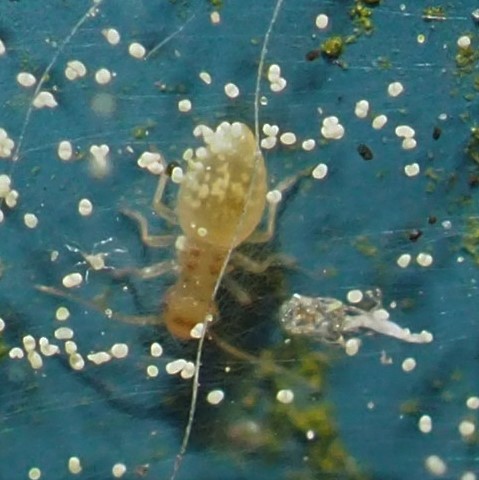
Excitement on May 23rd! About noon, I got a hunch to check the set of eggs the supposed Ectopsocus meridionalis laid on May 6 on South 4 from east. There was a bit of powdery-looking stuff near the eggs, and so I took a few pictures. What a surprise! There were 3 nymphs under the egg mass and 2 above. The next day I looked around for the nymphs. They had done a good job of scattering. But the egg mass seems to have some more nymphs to hatch. I suppose they will come out close to the others. Let's see.
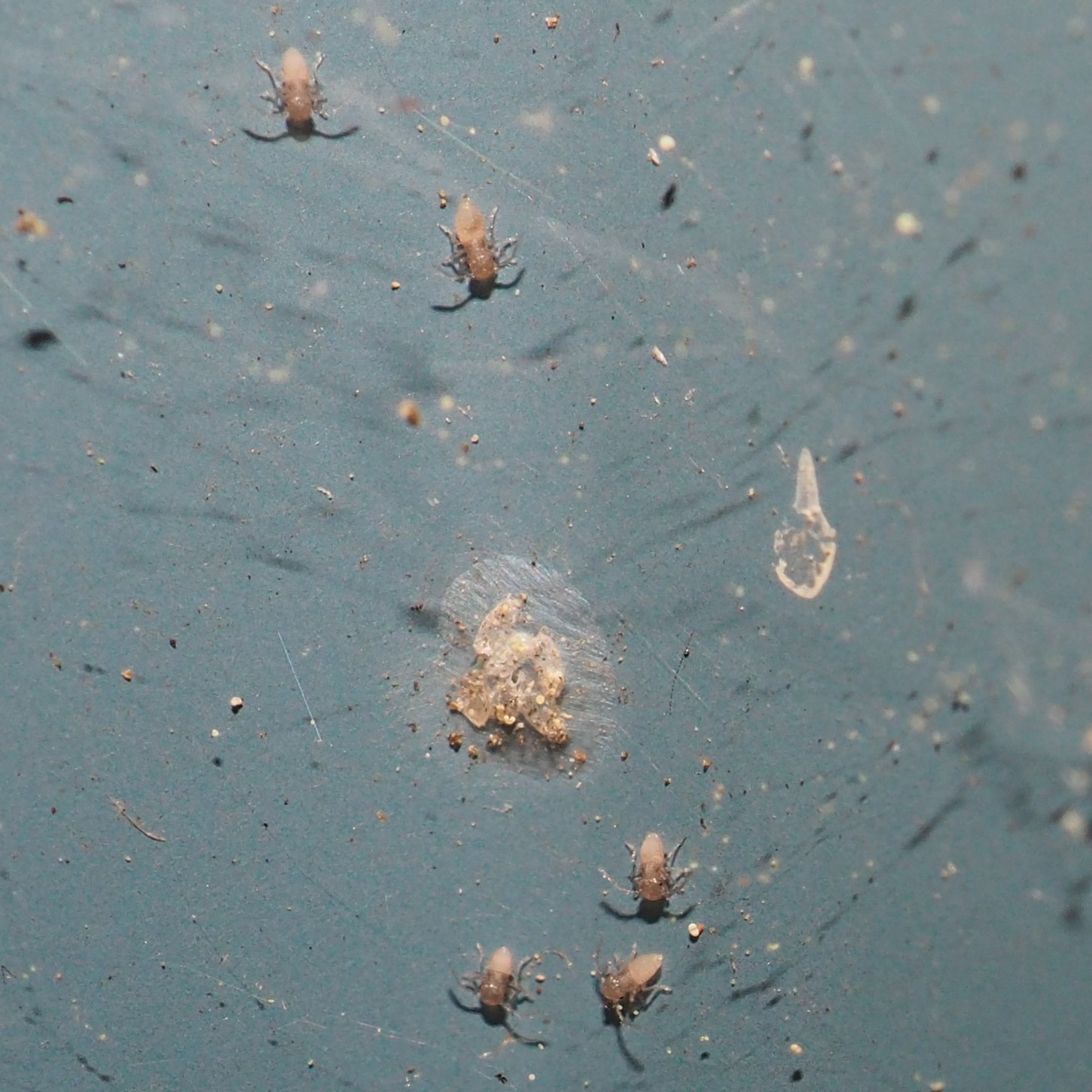
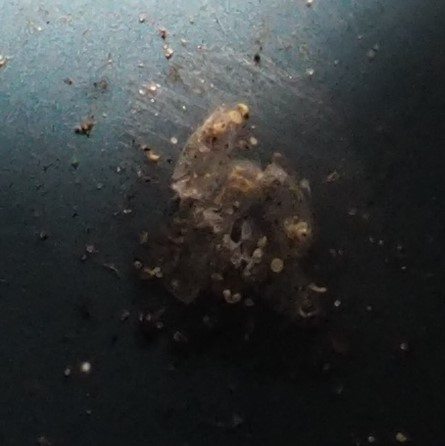
Yesterday (May 26, 2021) was a new shock. On the North Wall, panel 10, a tiny patch of dark red down near the lower left turned out to be a new hatching of a Barklouse I don't recognize. It doesn't look like Ectopsocus, Graphopsocus, Polypsocus, or anything else I've seen. Since then, I've been following them as they DISAPPEAR from their original site. Of course, some of them have been reappearing on panels 9, 8 and 7.
It turns out that they are infant Metylophorus novaescotiae, and there is a website devoted to them under 2021 Blogs.

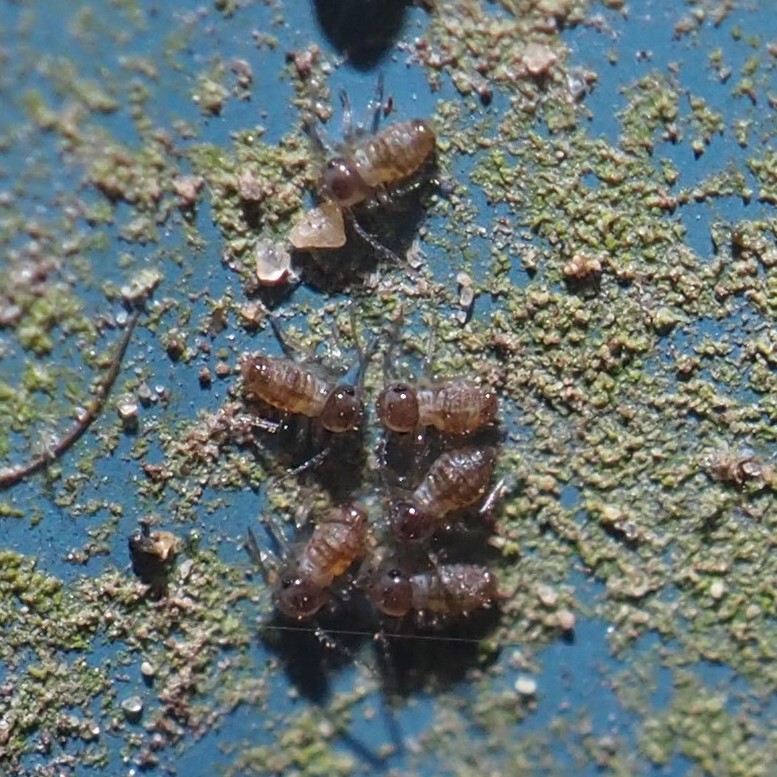
Pictures 1 and 2 show survivors from June 7 and one from June 9, from various panels - 9, 8, 7. Picture 3 shows a larger version that showed up on the East Wall on June 9. I don't THINK the larger one is from the same set of eggs, but the shape is evocative.
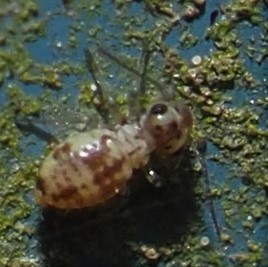
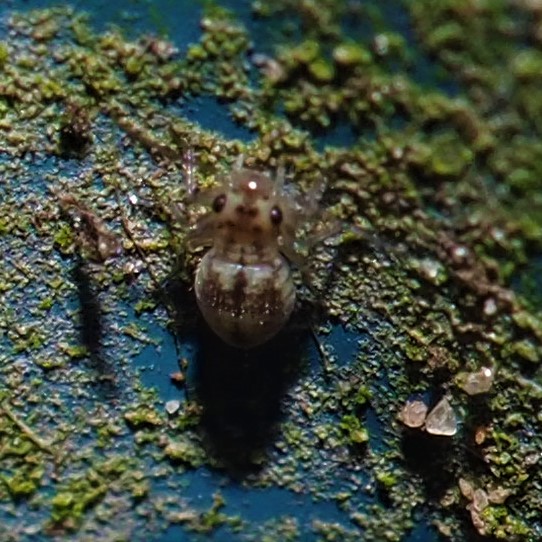
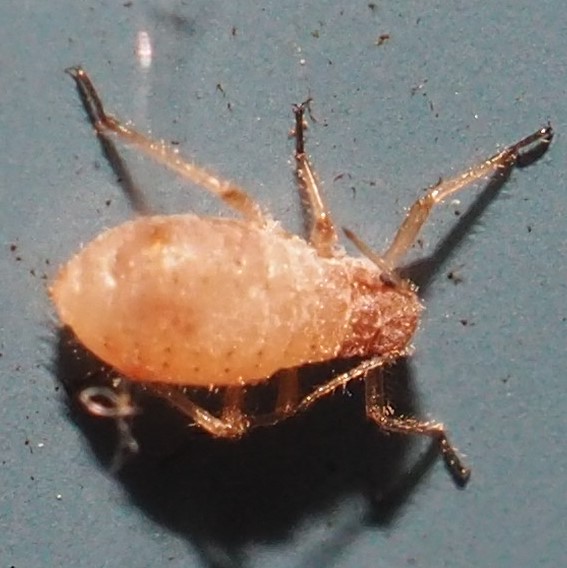
May 27 morning. Saw this little thing that looks like Ectopsocus or Lachesilla, but the venation doesn't look right for E. meridionalis. Aha! It isn't. Scott Shreve looked it up in his copy of Mockford's big Psocus book, and says that the "u-shaped" figure on the wing is a characteristic of Lachesilla.
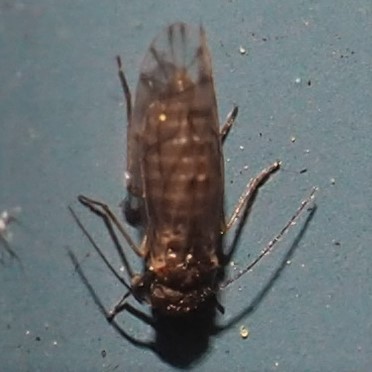
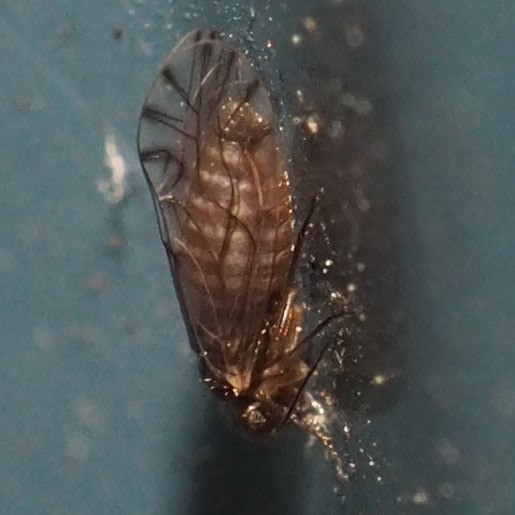
Some progress on some of the other Barklouse egg masses we've seen. First here (taken on April 29)is the clutch that had overwintered on the East Walll, 9 panels from the East-North corner of the Shop. Second is the same clutch on June 6 - note the color change that tips us off to possible nymphs coming to life, i.e. getting ready to hatch. Picture 3 shows that I missed most of the hatching and all that's left is one cell! This one cell is still (as of June 10 early morning) left to hatch!
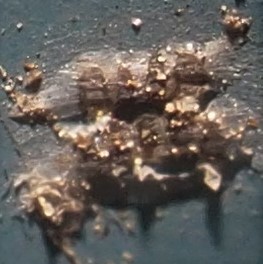

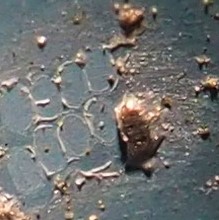
A few days ago, June 5 or 6, I found another place with eggs on East 2 from north on the left side of the panel. It turned out that this was just in time, because on June 6 you can see from picture 2 that those eggs had hatched, but a few hatchlings show up at the top! And from picture 3 you can see that all the eggs have hatched.
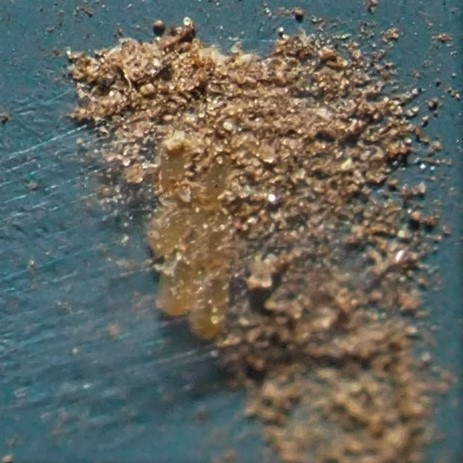

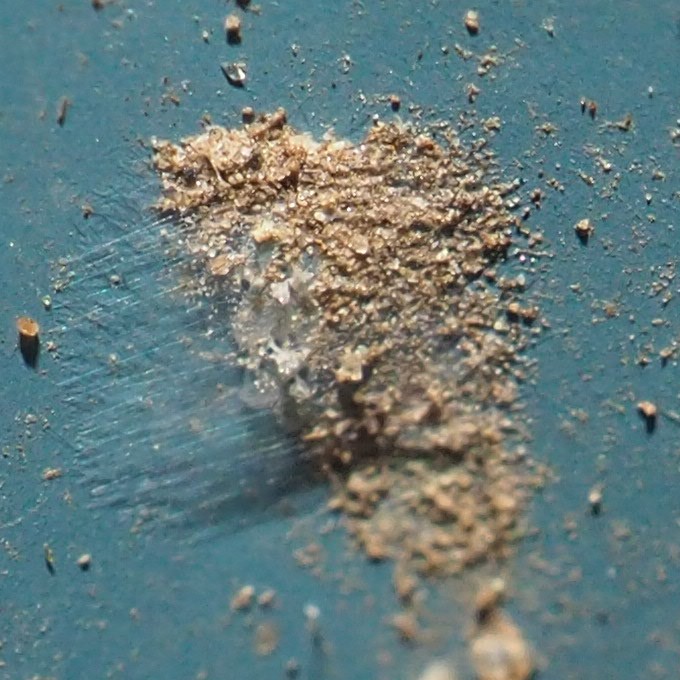
Back to Barklice Main Menu
Back to main menu
copyright Martha O'Kennon 2021
































































